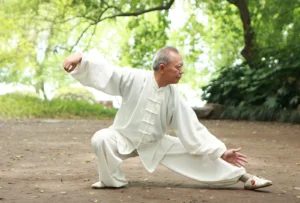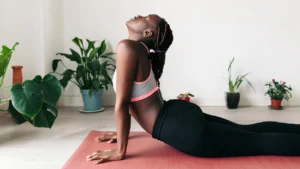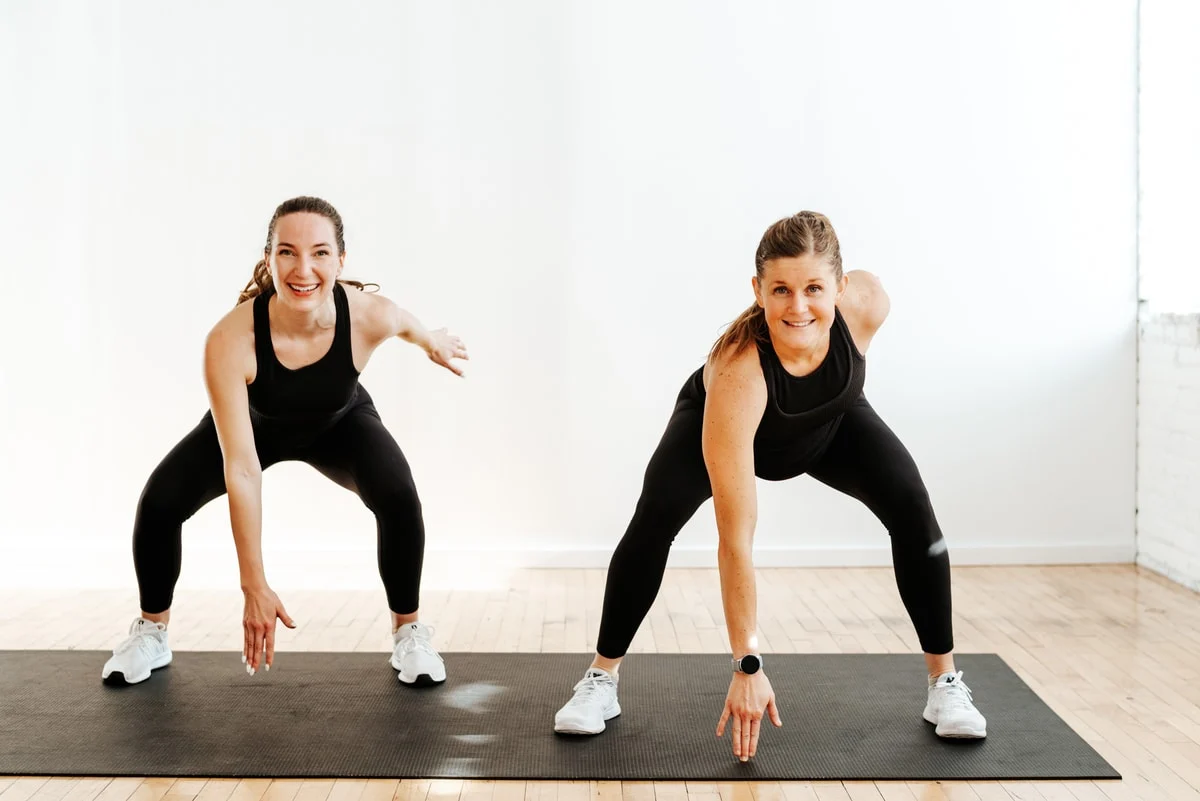Cardiovascular exercise is essential for maintaining heart health, burning calories, and improving overall fitness. However, high-impact activities like running or jumping can be tough on the joints, especially for those with joint pain, arthritis, or injuries. Fortunately, low-impact cardio workouts offer a great alternative, allowing you to reap the benefits of cardiovascular exercise without putting excessive stress on your joints. In this article, we’ll explore the benefits of low-impact cardio and highlight some effective workouts that are gentle on your joints.
What Is Low-Impact Cardio?
Low-impact cardio refers to exercises that elevate your heart rate while minimizing the impact on your joints. These activities typically involve keeping at least one foot on the ground at all times, reducing the force exerted on your knees, hips, and ankles. Despite being gentler on your body, low-impact cardio can still provide an excellent cardiovascular workout, helping you improve endurance, burn calories, and enhance overall fitness.
The Benefits of Low-Impact Cardio
1. Protects Your Joints

One of the most significant advantages of low-impact cardio is its ability to protect your joints from excessive wear and tear. This is particularly important for individuals with joint conditions like arthritis or those recovering from injuries. By reducing the impact on your joints, you can stay active without exacerbating pain or causing further damage.
2. Improves Heart Health

Low-impact cardio effectively raises your heart rate, improving cardiovascular health and reducing the risk of heart disease. Regular participation in these activities helps strengthen the heart muscle, enhance circulation, and lower blood pressure, all of which contribute to a healthier heart.
3. Increases Endurance

Consistent low-impact cardio workouts can improve your stamina and endurance. Over time, your body becomes more efficient at delivering oxygen to your muscles, allowing you to perform daily activities with greater ease and less fatigue.
4. Supports Weight Management

While low-impact, these exercises still burn calories, making them an excellent choice for weight management. Combined with a healthy diet, low-impact cardio can help you achieve and maintain a healthy weight, reducing the risk of obesity-related conditions such as type 2 diabetes and heart disease.
5. Reduces Stress and Boosts Mood

Like other forms of exercise, low-impact cardio triggers the release of endorphins, the body’s natural mood enhancers. Regular exercise can help reduce stress, anxiety, and depression, leading to improved mental health and overall well-being.
6. Accessible for All Fitness Levels

Low-impact cardio is suitable for people of all fitness levels, from beginners to seasoned athletes. Whether you’re just starting your fitness journey or looking for a joint-friendly workout, these exercises can be easily modified to match your abilities and goals.
Effective Low-Impact Cardio Workouts
1. Walking

Walking is one of the simplest and most accessible forms of low-impact cardio. It requires no special equipment, and you can do it almost anywhere. Walking at a brisk pace elevates your heart rate, improves circulation, and helps build endurance. To increase the intensity, you can add hills, stairs, or incorporate intervals of faster walking.
How to Get Started: Begin with a 20-30 minute walk at a comfortable pace and gradually increase the duration and intensity as your fitness improves.
2. Swimming

Swimming is a full-body workout that is incredibly gentle on the joints. The buoyancy of water supports your body, reducing the impact on your joints while providing resistance to build strength and improve cardiovascular fitness. Swimming can also improve flexibility and reduce stress, making it a great option for a comprehensive workout.
How to Get Started: Start with simple strokes like freestyle or breaststroke, aiming for 20-30 minutes of continuous swimming. As you build stamina, you can increase the duration or try more challenging strokes.
3. Cycling

Cycling, whether on a stationary bike or outdoors, is a fantastic low-impact cardio option. It engages your leg muscles while keeping stress off your joints. Cycling can be easily adjusted to different fitness levels by changing the resistance or speed, making it suitable for everyone from beginners to advanced exercisers.
How to Get Started: If you’re new to cycling, start with a 20-minute ride at a moderate pace. Gradually increase the time and intensity as your fitness level improves.
4. Elliptical Training

Elliptical machines provide a low-impact, full-body workout that mimics the motion of running without the joint stress. The elliptical engages both your upper and lower body, helping you burn calories and improve cardiovascular fitness. Most machines allow you to adjust the resistance and incline, letting you control the intensity of your workout.
How to Get Started: Begin with a 15-20 minute session on the elliptical at a moderate resistance level. As you become more comfortable, you can increase the duration, resistance, or incorporate interval training.
5. Rowing

Rowing is a low-impact, full-body workout that targets your legs, core, and upper body. It’s an excellent way to improve cardiovascular endurance while building strength and stamina. Rowing is also great for improving posture and core stability, making it a well-rounded exercise option.
How to Get Started: Start with 10-15 minutes of rowing at a steady pace. Focus on maintaining proper form to avoid injury, and gradually increase the duration and intensity as your fitness improves.
6. Water Aerobics

Water aerobics offers the benefits of a cardio workout with the added support of water. The water’s resistance makes the exercises more challenging while still being gentle on your joints. Water aerobics can improve cardiovascular fitness, strength, and flexibility, making it an excellent option for people with joint pain or mobility issues.
How to Get Started: Join a water aerobics class at your local pool, or try a simple routine on your own. Start with 20-30 minutes of exercises like water walking, leg lifts, and arm circles.
7. Low-Impact Dance Classes

Dance classes like Zumba or low-impact aerobics offer a fun way to get your heart pumping without stressing your joints. These classes often involve rhythmic movements that improve coordination, balance, and cardiovascular fitness. The social aspect of group classes can also enhance motivation and make exercise more enjoyable.
How to Get Started: Look for beginner-friendly, low-impact dance classes at your local gym or community center. Start with a 30-45 minute class, and choose a pace that feels comfortable for you.
8. Tai Chi

Tai Chi is a low-impact martial art that combines slow, deliberate movements with deep breathing and mindfulness. It’s a gentle way to improve cardiovascular fitness, balance, flexibility, and mental clarity. While it may not elevate your heart rate as much as other forms of cardio, Tai Chi offers numerous health benefits, particularly for older adults or those with chronic conditions.
How to Get Started: Look for a Tai Chi class in your area, or follow along with online tutorials. Practice for 20-30 minutes a few times a week to experience the benefits.
9. Yoga

While not traditionally considered cardio, certain styles of yoga, like Vinyasa or Power Yoga, can provide a cardiovascular workout. These styles involve continuous movement from one pose to the next, elevating your heart rate while improving strength, flexibility, and balance. Yoga is also excellent for reducing stress and improving mental health.
How to Get Started: Start with a beginner’s Vinyasa or Power Yoga class. Practice for 30-45 minutes, focusing on maintaining steady breath and fluid movements.
10. Stair Climbing

Stair climbing is a low-impact activity that provides a great cardio workout. It strengthens your legs, glutes, and core while raising your heart rate. Stair climbing is also an effective way to burn calories and improve endurance without putting too much stress on your joints.
How to Get Started: Begin with 10-15 minutes of stair climbing at a comfortable pace. As your fitness improves, you can increase the duration or add intervals of faster climbing.
Conclusion
Low-impact cardio exercises are an excellent way to improve your cardiovascular health, build endurance, and manage your weight without placing undue stress on your joints. Whether you’re recovering from an injury, managing joint pain, or simply looking for a gentler workout, these activities provide a safe and effective way to stay active. By incorporating a variety of low-impact exercises into your routine, you can enjoy the benefits of cardio while protecting your joints and maintaining a healthy, active lifestyle.

